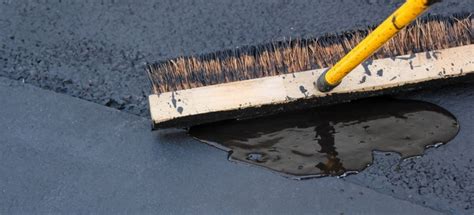Driveway Sealant Drying: What You Should Know Before You Start
A freshly sealed driveway looks fantastic—smooth, black, and protected from the elements. But the process isn't complete until the sealant is fully dry. Understanding driveway sealant drying time and the factors that influence it is crucial for achieving a long-lasting, beautiful finish. This comprehensive guide covers everything you need to know before you begin your sealing project, ensuring a successful outcome.
How Long Does Driveway Sealant Take to Dry?
The drying time for driveway sealant varies depending on several factors, including:
- Type of sealant: Water-based sealants generally dry faster than oil-based ones. Water-based sealants might be touch-dry in a few hours, while oil-based sealants can take 12-24 hours or even longer.
- Temperature: Warmer temperatures accelerate drying. Hot, sunny days will significantly reduce drying time, while cooler, humid conditions will prolong it.
- Humidity: High humidity slows down the drying process. Moisture in the air competes with the sealant's evaporation.
- Thickness of application: A thicker coat will naturally take longer to dry than a thin, even coat.
- Sunlight: Direct sunlight speeds up drying, but excessive heat can also negatively impact the sealant's curing process.
Generally, you should expect a minimum of 6-8 hours of dry time before lightly walking on the driveway, and at least 24 hours before driving on it. Always refer to the manufacturer's instructions on the specific sealant you've chosen for the most accurate drying time estimate.
What Happens if Driveway Sealant Doesn't Dry Properly?
Improper drying can lead to several problems:
- Stickiness: The sealant remains tacky and attracts dirt and debris, ruining the appearance and compromising the protective layer.
- Cracking: Incomplete drying can cause the sealant to crack more easily over time, reducing its lifespan and effectiveness.
- Peeling: The sealant might peel away from the surface due to insufficient adhesion.
- Pooling: Uneven drying can lead to puddles of sealant, creating an uneven and unsightly surface.
How to Speed Up Driveway Sealant Drying (Safely)
While you can't magically make the sealant dry faster, you can optimize conditions to encourage quicker drying:
- Apply on a warm, dry, and sunny day: This is the best scenario for faster drying times.
- Ensure good ventilation: Avoid sealing on windy days, but good airflow helps the sealant evaporate more efficiently.
- Apply a thin, even coat: A thick coat will significantly prolong drying.
- Avoid over-application: Follow the manufacturer's instructions on application rate.
Never use artificial heat sources to dry the sealant faster. This can damage the sealant, leading to cracking and other problems.
How Can I Tell if My Driveway Sealant is Dry?
The best way to determine if your driveway sealant is dry is to follow the manufacturer's instructions. However, here are some general guidelines:
- Touch test: Gently press a clean finger onto the surface. If it's still sticky, it needs more time to dry.
- Visual inspection: Check for any sheen or glossiness. A fully dried sealant will typically have a matte finish.
- Wait for the recommended time: Always err on the side of caution and wait at least the minimum drying time specified by the manufacturer before using your driveway.
What to Do After Driveway Sealant is Dry
Once the sealant is completely dry, you can enjoy your newly protected and enhanced driveway. However, it's crucial to follow some post-drying care instructions:
- Avoid heavy traffic immediately: Allow at least a few days for the sealant to fully cure before subjecting it to heavy use.
- Clean up any spills or excess sealant promptly: This prevents discoloration and ensures a uniform finish.
- Regularly maintain your sealed driveway: This will extend its life and continue to protect your investment.
How long should I wait before driving on my newly sealed driveway?
This depends on the type of sealant used and the weather conditions. Generally, it is recommended to wait at least 24 hours, or even longer, as indicated by the manufacturer's instructions. Driving on the driveway before it is fully cured could cause tire marks, damage the seal, and reduce its longevity.
Can I use my driveway immediately after sealing?
No. You should absolutely avoid any use of your driveway, including walking or driving, until it's completely dry according to the manufacturer's guidelines. Premature use will compromise the integrity of the sealant and lead to an uneven, damaged finish.
This comprehensive guide provides a detailed overview of driveway sealant drying times and considerations. Remember, patience is key for a long-lasting and beautiful result. Always prioritize safety and follow the manufacturer’s instructions for the best outcome.

